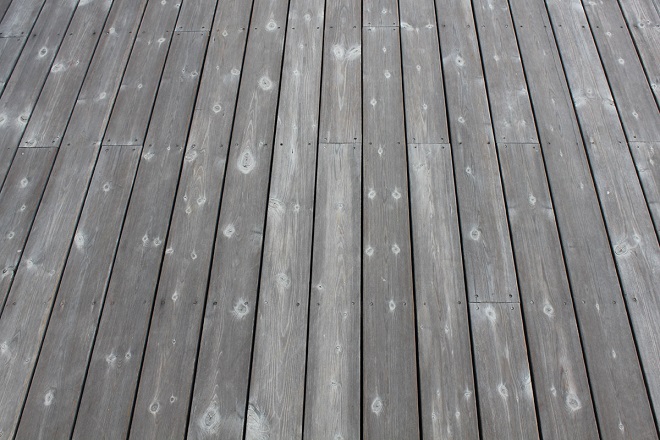From the Editors of E – The Environmental Magazine
EarthTalk

Kebony is a sustainably-harvested pine product that is modified at the molecular level to be stronger so it can last 3-5 times as long as other decking materials. Credit: Kebony.com.
Dear EarthTalk: I am adding a deck onto my house this summer and wonder which decking materials (wood or otherwise) are the greenest? — Bill A., San Francisco, CA
As the weather warms up, we gravitate toward the outdoors, and what better way to enjoy the sunshine than on your very own deck. If you are building a new deck or sprucing up an existing one, you have the opportunity to make green choices so you can relax outside guilt-free. Luckily there are plenty of attractive and low-maintenance options out there these days that won’t break the bank or ruin the planet.
Of course, most of us think wood when we think about our ideal deck. It’s non-toxic, natural, renewable and recyclable, and it biodegrades without any polluting by-products. Cedar, which is naturally rot- and insect-resistant, may be the most common decking wood, but it takes regular maintenance if it’s going to look its best and last more than a few years. Redwood is another great naturally hearty choice for decks, but it’s hard to come by—and expensive—given limited supply. Another common wood for decks is pressure-treated Yellow Pine, but the chemical impregnation that makes it stand up to the elements doesn’t look great, and, even worse, can leach copper into aquatic ecosystems.
Then there are the tropical hardwoods, controversial given the decimation of tropical forests by mechanized logging since World War II. But certification of these woods as “sustainably harvested” by non-profits like the Forest Stewardship Council (FSC) can help consumers on the hunt for deck wood feel better about their use of ipe, garapa, cumaru or tigerwood—each of which evolved in the tropical rainforests of Latin America and are known for durability and natural resistance to rot and insects. Ipe, given how attractive it looks and that it can last up to 40 years in a decking application, has become especially popular in recent years.
That said, just because your tropical hardwood is FSC-certified doesn’t mean it’s as green as something that grows closer to your home. Factoring in the length of the journey from the source forest to your home—knowing that fossil fuels will be spewed along the way—is key to determining how green your decking choice is overall.
Besides straight-ahead wood, another option is modified wood. Kebony, for instance, is an FSC-certified pine product that’s modified to last three to five times as long as other deck woods. The modification process changes the cellular structure of the wood on a molecular level, increasing its density by permanently swelling and thickening the cells. Thermory is another modified wood product that’s excellent for decking, guaranteed to last 25 years without rot.
Beyond wood, composite decking (TimberTech, Trex, Dura-Life, etc.) is gaining traction, even among some environmentalists given that it doesn’t contribute to deforestation and the resins used in its production are typically recycled. Unlike wood, these come in a variety of colors, don’t need repainting and are splinter-free. If you want to split the difference between plastic and wood, Cali-Bamboo’s composite decking made from recycled bamboo is a solid choice.
CONTACTS:
FSC, fsc.org;
Kebony, kebony.com;
Thermory, thermoryusa.com;
TimberTech, timbertech.com;
Trex, trex.com;
Dura-Life, duralifedecking.com;
Cali-Bamboo, calibamboo.com.
EarthTalk® is produced by Roddy Scheer & Doug Moss for the 501(c)3 nonprofit EarthTalk. See more at https://emagazine.com. To donate, visit https://earthtalk.org. Send questions to: question@earthtalk.org.
